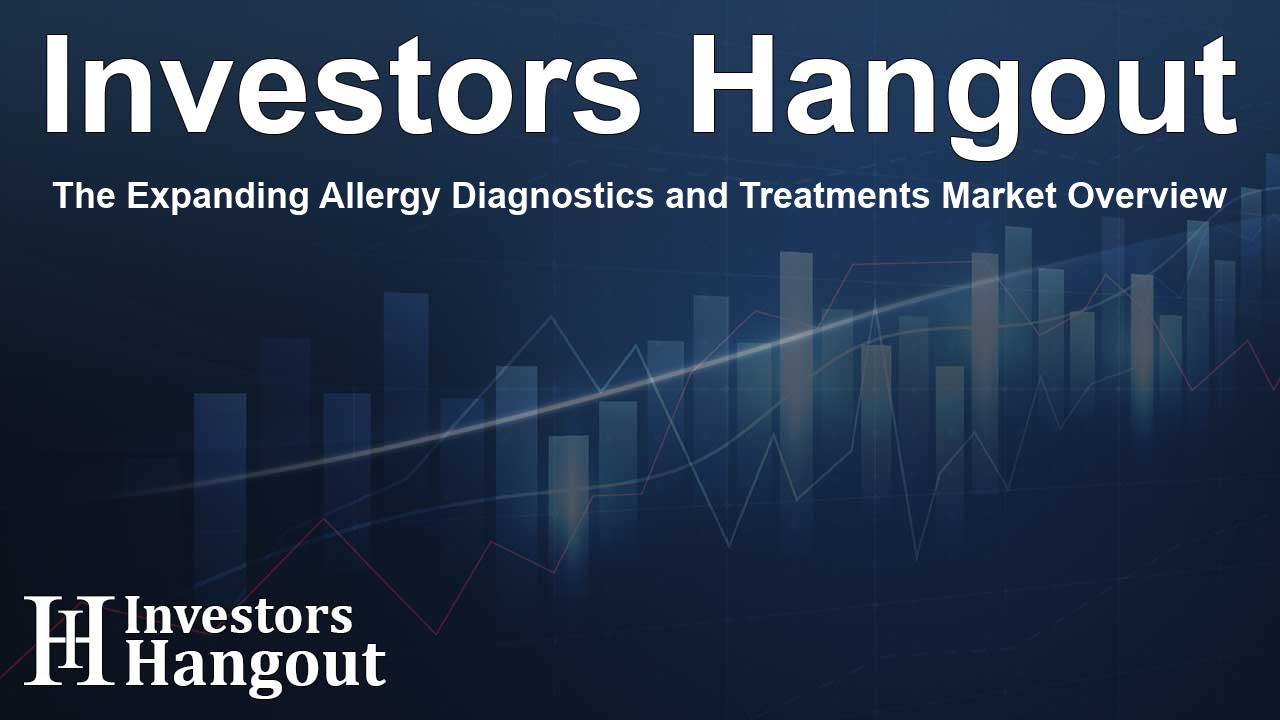The Expanding Allergy Diagnostics and Treatments Market Overview

Understanding the Allergy Diagnostics and Treatments Market
The allergy diagnostics and treatments market is witnessing significant growth, projected to expand from $67.8 billion to an impressive $96.4 billion by 2030. With a compound annual growth rate (CAGR) of 7.3% during this period, the market is adapting to the rising challenges posed by allergic diseases.
Market Segmentation and Scope
This market encompasses various segments, including diagnostics and treatments. Within diagnostics, we see skin and blood testing methods, while treatments range from diverse drug types to innovative immunotherapy methods. Regional dynamics play a critical role, with insights covering North America, Europe, Asia-Pacific, the Middle East, Africa, and South America, analyzing key trends that affect market growth.
Key Drivers of Growth
The market's growth is propelled by several factors:
- Advancements in Allergy Diagnosis and Treatment: Breakthroughs in molecular diagnostics and AI-driven tools are enhancing the accuracy of allergy detection, leading to more personalized treatment options. This progression is critical in minimizing side effects and improving patient outcomes.
- Rising Allergy Rates: Allergies are becoming increasingly prevalent, particularly influenced by pollution and changing urban lifestyles. This uptick in cases drives demand for sophisticated diagnostics and effective treatments.
- Expanding Pipeline of Allergy Medications: Pharmaceutical companies are actively developing new therapies, including monoclonal antibodies and advanced patch-based treatments. These emerging therapies aim to enhance safety and patient convenience.
The Importance of Accurate Diagnostics
With the increasing prevalence of allergies, particularly in urban settings, the need for accurate diagnostics to identify triggers is paramount. Modern advancements in immunotherapy and personalized medicine are now playing a vital role in streamlining treatment plans tailored to individual needs. Early diagnosis not only aids in formulating effective strategies but also significantly reduces healthcare costs, which is a growing concern for many.
Recent Innovations in Allergy Treatments
New treatments are continuously emerging, with immunotherapy focusing on modifying the immune response for long-lasting relief. The development of epinephrine auto-injectors has revolutionized the management of severe allergies, enabling those affected to enjoy more typical lifestyles. Traditional skin prick tests are still widely used; however, more precise IgE tests are becoming the preferred method for diagnosis.
Questions Addressed in the Report
Several pertinent questions regarding the market are answered within the report:
- What is the market size and growth forecast? The global market for allergy diagnostics and treatment, valued at $63.5 billion, is expected to surge to $96.4 billion by 2030.
- What drives market growth? Notable advances in diagnosis and treatment, alongside rising allergy incidence globally, are key factors influencing growth.
- What segments are analyzed in the report? Major segments include diagnostic types and treatment categories, covering various allergens, drug types, and routes of administration.
- Which treatment segments are likely to lead the market? While antihistamines currently dominate, immunotherapies are projected to grow robustly.
- Which region leads in market share? North America holds a significant portion of the market, valued at $37.1 billion, with a forecast to reach $56.7 billion.
Leading Companies in the Market
The allergy diagnostics and treatment sector is home to numerous industry leaders, including:
- ABBVIE INC.
- ALK
- AMGEN INC.
- ASTRAZENECA
- BAYER AG
- F. HOFFMANN-LA ROCHE LTD.
- GSK PLC.
- LILLY
- NOVARTIS AG
- PFIZER INC.
- REVVITY
- SANOFI
- STALLERGENES GREER
- THERMO FISHER SCIENTIFIC INC.
- VIATRIS INC.
Frequently Asked Questions
What is the projected size and growth rate of the market?
The market is expected to grow from $63.5 billion to $96.4 billion by 2030, at a CAGR of 7.3%.
What factors are driving the market's growth?
Market drivers include significant innovations in allergy diagnosis and treatment, a growing patient population, and recent product launches.
What segments does the report cover?
The report segments the market into diagnostics, treatments, and allergens, focusing on diverse drug types and methods of administration.
Which treatment segment will dominate by 2030?
While antihistamines are leading now, substantial growth is expected in immunotherapy treatments.
Which region has the largest market share?
North America is projected to maintain the largest share, anticipated to grow to $56.7 billion by 2030.
About The Author
Contact Kelly Martin privately here. Or send an email with ATTN: Kelly Martin as the subject to contact@investorshangout.com.
About Investors Hangout
Investors Hangout is a leading online stock forum for financial discussion and learning, offering a wide range of free tools and resources. It draws in traders of all levels, who exchange market knowledge, investigate trading tactics, and keep an eye on industry developments in real time. Featuring financial articles, stock message boards, quotes, charts, company profiles, and live news updates. Through cooperative learning and a wealth of informational resources, it helps users from novices creating their first portfolios to experts honing their techniques. Join Investors Hangout today: https://investorshangout.com/
The content of this article is based on factual, publicly available information and does not represent legal, financial, or investment advice. Investors Hangout does not offer financial advice, and the author is not a licensed financial advisor. Consult a qualified advisor before making any financial or investment decisions based on this article. This article should not be considered advice to purchase, sell, or hold any securities or other investments. If any of the material provided here is inaccurate, please contact us for corrections.
